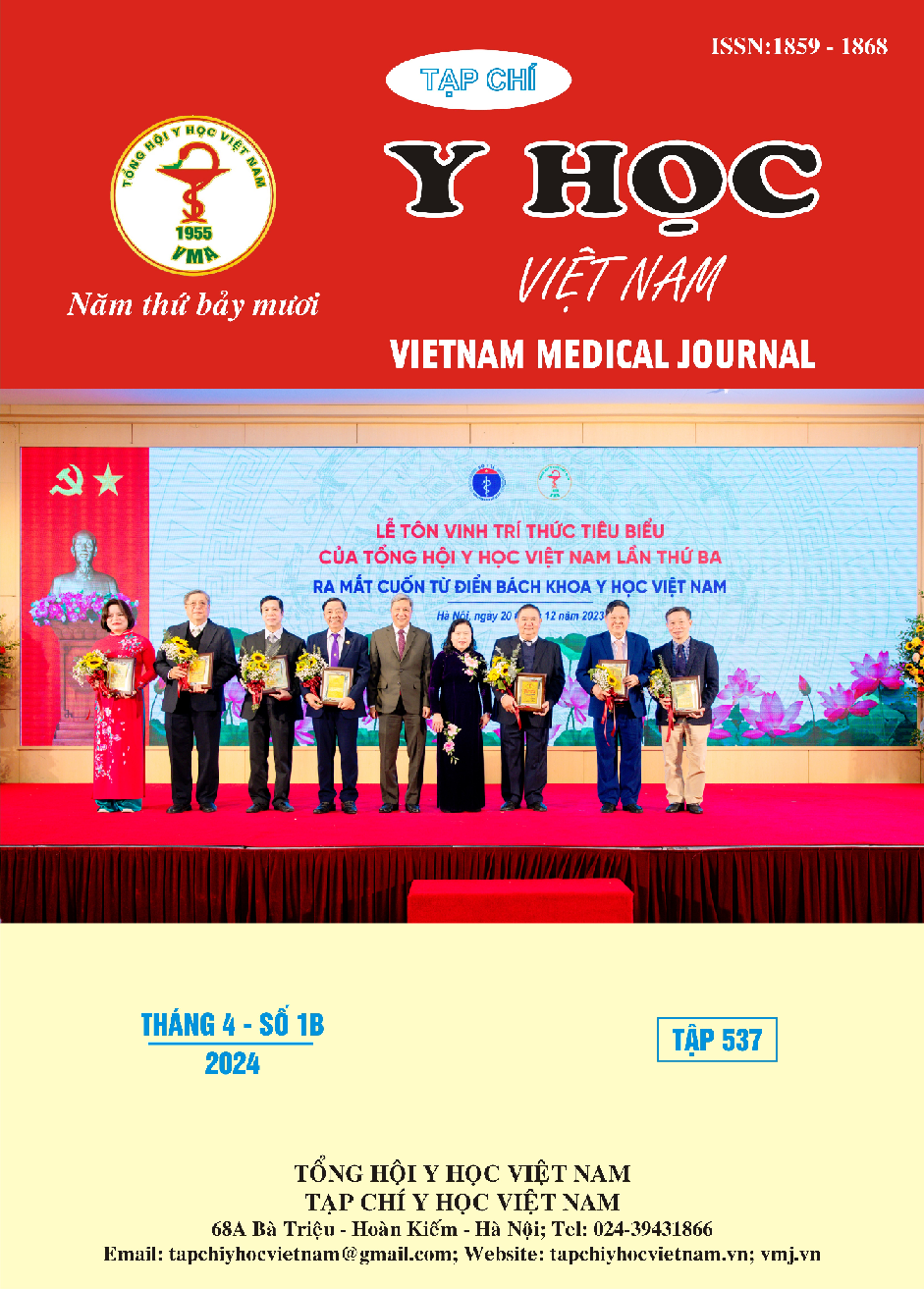TÌNH HÌNH KHÁNG CARBAPENEM CỦA HỌ VI KHUẨN ENTEROBACTERIACEAE TẠI BỆNH VIỆN NGUYỄN TRI PHƯƠNG GIAI ĐOẠN 2019-2023
Nội dung chính của bài viết
Tóm tắt
Đặt vấn đề: Tình hình đề kháng kháng sinh nhóm Carbapenem ở các vi khuẩn thuộc họ vi khuẩn đường ruột (Enterobacteriaceae) ngày càng phức tạp, cần có chiến lược quản lý và sử dụng kháng sinh này hợp lý giúp nâng cao hiệu quả điều trị bệnh nhiễm khuẩn. Mục tiêu: Mô tả đặc điểm về tính kháng các kháng sinh thuộc nhóm Carbapenem của các vi khuẩn Enterobacteriaceae tại bệnh viện Nguyễn Tri Phương giai đoạn 2020-2023. Đối tượng và phương pháp nghiên cứu: Dữ liệu kháng sinh của các chủng vi khuẩn thuộc họ Enterobacteriaceae phân lập được từ bệnh nhân điều trị tại bệnh viện Nguyễn Tri Phương từ tháng 01/2019 đến tháng 12/2023, có kết quả kháng sinh đồ kháng nhóm Carbapenem. Sự khác biệt về xu hướng nhạy cảm kháng sinh qua các năm được khảo sát bằng phép kiểm Chi bình phương. Kết quả: Trong giai đoạn 2019 - 2023, tổng cộng có 11.591 mẫu cấy phân lập được các vi khuẩn thuộc họ Enterobacteriaceae. Chiếm tỷ lệ cao nhất là E.coli 16,7%; K.pneumoniae 12,8%; Enterobacter spp 3,6%; các vi khuẩn khác thuộc họ Enterobacteriaceae 4,2%. Các bệnh phẩm đường hô hấp, các bệnh phẩm mủ/dịch tiết/catheter, nước tiểu và máu là các loại bệnh phẩm có tỷ lệ dương tính cao với các vi khuẩn này. K.pneumoniae là vi khuẩn có tỷ lệ đề kháng Carbapenem cao nhất (29,6%), theo sau là Enterobacter spp (10,2%), các vi khuẩn Enterobacteriaceae (4,0%) và E.coli (3,6%). Ghi nhận xu hướng tăng đề kháng với Amoxicillin-Clavulanate, Cefoxitin và Imipenem ở E.coli và K.pneumoniae (p<0,001). Tỷ lệ đề kháng Carbapenem ở Khoa Hồi sức chống độc (ICU) cao hơn các nhóm khoa lâm sàng khác với tất cả loài vi khuẩn thuộc họ Enterobacteriaceae được khảo sát (p<0,001). Các chủng kháng Carbapenem sinh men ESBL và/hoặc AmpC chiếm tỷ lệ thấp hơn các chủng không sinh men. Kết luận: Các vi khuẩn Enterobacteriaceae có tỷ lệ đề kháng cao và xu hướng gia tăng đề kháng với nhóm Carbapenem, đặc biệt là K.pneumoniae. Cần có chiến lược quản lý sử dụng chặt chẽ nhóm kháng sinh.
Chi tiết bài viết
Từ khóa
Enterobacteriaceae, Carbapenem, đề kháng.
Tài liệu tham khảo
2. Vân, P.T., P.V. Hậu, N.T. Giang, and Đ.T.T. Hà, Tính kháng kháng sinh của các chủng vi khuẩn Enterobacteriaceae phân lập tại bệnh viện E (2018-2020). Tạp chí Truyền nhiễm Việt Nam, 2023. 1(41): p. 67-73.
3. Tilahun, M., Y. Kassa, A. Gedefie, and M. Ashagire, Emerging carbapenem-resistant Enterobacteriaceae infection, its epidemiology and novel treatment options: a review. Infection and Drug Resistance, 2021: p. 4363-4374.
4. Lương, T.H.N., A. Hoang, T.K.H. Trần, and X.Q. Nghiêm, Đặc điểm kháng kháng sinh của một số vi khuẩn Gram âm sinh enzyme beta lactamase phổ rộng phân lập tại bệnh viện Trung ương Thái Nguyên năm 2018-2020. Tạp chí Y học Việt Nam, 2022. 512(2).
5. Thomas, M.G. and S.J. Streat, CHAPTER 41 - Infections in intensive care patients, in Antibiotic and Chemotherapy (Ninth Edition), R.G. Finch, D. Greenwood, S.R. Norrby, and R.J. Whitley, Editors. 2010, W.B. Saunders: London. p. 524-537.
6. Mol, P.R., K.M. Bindayna, and G. Shanthi, Evaluation of Two Phenotypic Methods for the Detection of Plasmid-Mediated AmpC β-Lactamases among Enterobacteriaceae Isolates. J Lab Physicians, 2021. 13(2): p. 151-155.
7. Phu, V.D., et al., Burden of hospital acquired infections and antimicrobial use in Vietnamese adult intensive care units. PloS one, 2016. 11(1): p. e0147544.
8. Parker, J.K., et al., Carbapenem-Resistant and ESBL-Producing Enterobacterales Emerging in Central Texas. Infect Drug Resist, 2023. 16: p. 1249-1261.
9. Gupta, G., V. Tak, and P. Mathur, Detection of AmpC β Lactamases in Gram-negative Bacteria. J Lab Physicians, 2014. 6(1): p. 1-6.


